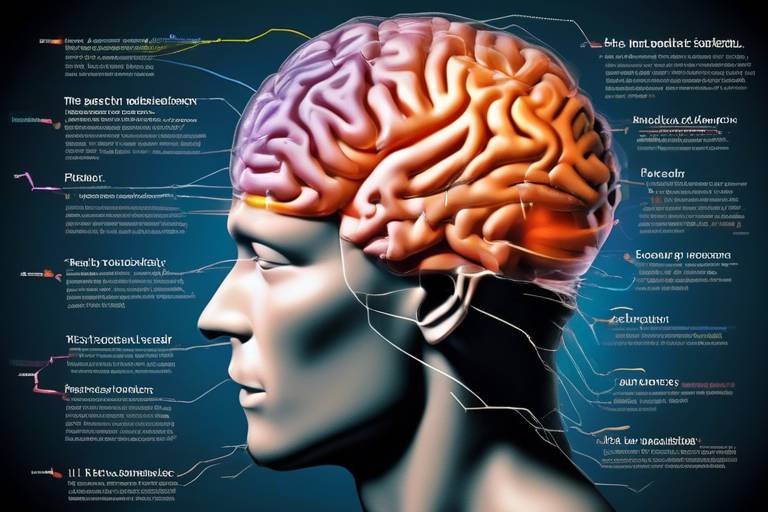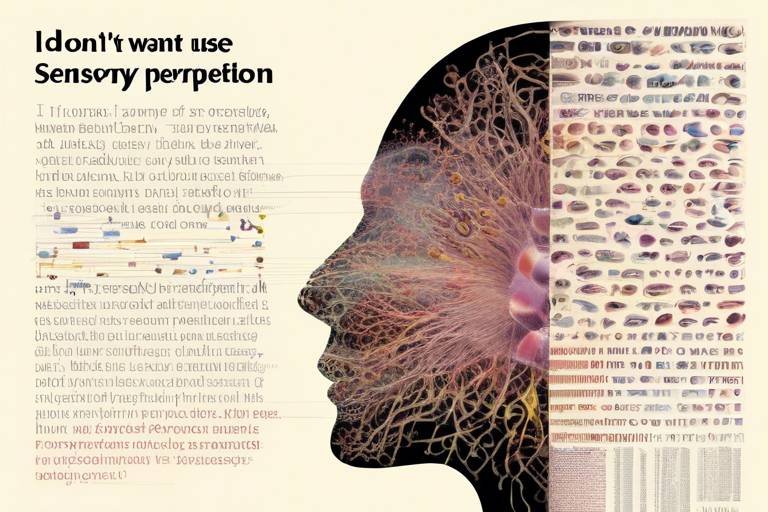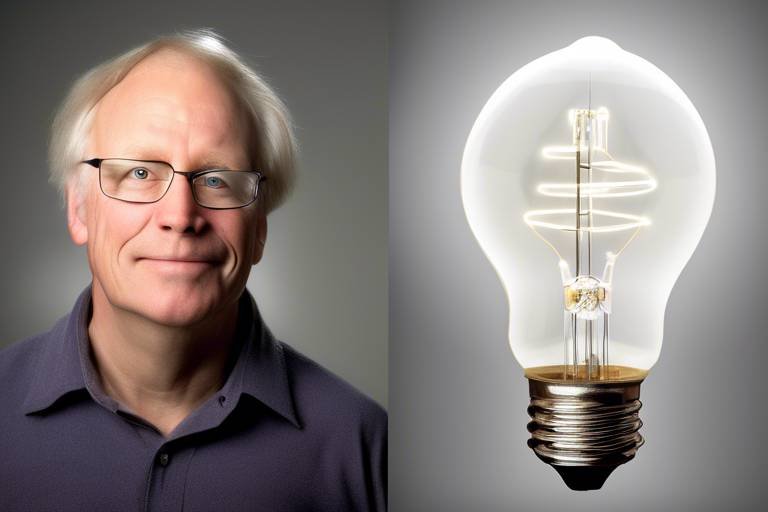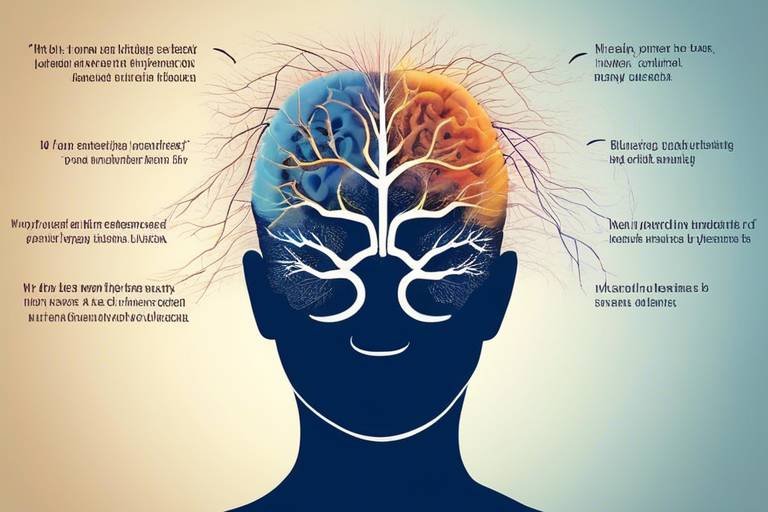The Science of Brain Function - How We Think
Have you ever paused to wonder how your brain generates thoughts, processes information, and ultimately shapes your reality? It's a fascinating journey into the intricate world of neuroscience, where billions of neurons communicate through complex networks, creating the tapestry of our thoughts. In this article, we will explore the remarkable mechanisms behind brain function, diving deep into the realms of cognitive science to unveil the secrets of how we think.
To truly appreciate the marvels of brain function, we must first grasp some fundamental concepts in neuroscience. At the heart of this field lies the structure of the brain, which is divided into several key regions, each responsible for different functions. The brain consists of billions of neurons, which are the building blocks of our nervous system. These neurons communicate with each other through synapses, using chemical messengers known as neurotransmitters. This intricate web of connections is what allows us to think, feel, and interact with the world around us.
Now that we have a basic understanding of the brain's structure, let's delve into the various cognitive processes that govern our thoughts and behaviors. These processes include perception, attention, memory, and decision-making. They interact in dynamic ways, shaping our understanding of the world. For instance, our perception is the process through which we interpret sensory information, while attention directs our focus to specific stimuli, filtering out distractions. Together, these processes are essential for navigating our daily lives.
Memory plays a crucial role in learning and thinking. It allows us to store and retrieve information, influencing our cognitive abilities. There are different types of memory, including short-term and long-term memory. Short-term memory holds information temporarily, while long-term memory stores it for extended periods. Understanding these types of memory is essential for grasping how we learn and recall information, ultimately shaping our identity and knowledge.
Working memory is a temporary storage system that allows us to hold and manipulate information. Think of it as a mental workspace where we can juggle multiple tasks at once, like solving a math problem or planning our day. Its significance in problem-solving and everyday tasks cannot be overstated. In fact, working memory is often considered a key predictor of intelligence and academic success, highlighting its importance in our cognitive toolkit.
On the other hand, long-term memory is where information is stored for the long haul. It is like a vast library in our minds, organized and categorized for easy retrieval. The formation of long-term memories involves several processes, including encoding, storage, and retrieval. This section will explore how our experiences shape these memories, influencing our identity and knowledge. Without long-term memory, our ability to learn from the past and apply that knowledge to future situations would be severely limited.
Perception and attention are critical for processing information. Our senses gather data from the environment, and our attention directs our focus, affecting our thought processes. For example, when you're engrossed in a book, your attention filters out surrounding noise, allowing you to immerse yourself in the story. This selective attention is a vital cognitive skill that enhances our ability to learn and engage with the world.
Did you know that our emotions significantly influence our thoughts and decision-making? Emotions are not just fleeting feelings; they play a crucial role in how we process information and make choices. This section will explore the interplay between emotional states and cognitive functions, highlighting how our feelings shape our reasoning. For instance, when we feel happy, we may be more open to new ideas, while stress can cloud our judgment.
Stress can be a double-edged sword when it comes to cognitive functions. While a little stress can motivate us, chronic stress can impair our memory, attention, and decision-making abilities. This part will discuss how stress affects our brain and the importance of managing it for optimal brain function. Techniques such as mindfulness, exercise, and proper sleep can help mitigate stress, allowing our brains to function at their best.
Emotional intelligence, the ability to understand and manage emotions, is another vital aspect of cognitive processes. This section will cover its role in enhancing cognitive functions and improving interpersonal relationships. Individuals with high emotional intelligence tend to navigate social situations more effectively, leading to better collaboration and communication. It's a skill that can be developed over time, enriching our personal and professional lives.
Brain plasticity refers to the brain's remarkable ability to change and adapt throughout our lives. This section will explore how experiences shape our neural connections and the implications for learning and recovery from injuries. The brain is not a static organ; it continually rewires itself based on our experiences, making it an incredibly dynamic system.
Learning is a key aspect of brain plasticity. Every time we encounter new information, our brains create new neural pathways, reinforcing the idea that you are never too old to learn. This part discusses how new experiences lead to neural changes and how this adaptability is vital for cognitive development. Embracing lifelong learning can keep our brains healthy and agile.
The brain's ability to recover from injury showcases its plasticity. Whether it's through rehabilitation techniques or natural recovery processes, the brain can often regain lost functions. This section will explore various rehabilitation strategies and their effectiveness in restoring cognitive functions after trauma. Understanding brain plasticity not only offers hope for recovery but also underscores the importance of nurturing our cognitive health throughout life.
- What is brain plasticity? Brain plasticity is the brain's ability to change and adapt in response to experiences.
- How does memory work? Memory involves encoding, storing, and retrieving information, with different types such as short-term and long-term memory.
- Can stress affect my thinking? Yes, chronic stress can impair cognitive functions like memory and decision-making.
- What is emotional intelligence? Emotional intelligence is the ability to understand and manage your own emotions and those of others.

Neuroscience Basics
When we dive into the world of neuroscience, we're stepping into a fascinating realm that seeks to unravel the mysteries of the human brain. This complex organ, often compared to a supercomputer, is not only responsible for our thoughts but also for our emotions, memories, and behaviors. Understanding the basic structure of the brain is essential for grasping how we think and process information. At its core, the brain is made up of billions of cells known as neurons, which communicate with each other through electrical and chemical signals.
Neurons are the building blocks of our nervous system. Each neuron consists of three main parts: the cell body, dendrites, and the axon. The cell body contains the nucleus and is responsible for the general maintenance of the neuron. Dendrites are like tiny tree branches that receive messages from other neurons, while the axon transmits these messages to other neurons, muscles, or glands. This intricate network of connections allows for the rapid transmission of information throughout the brain and body.
Another crucial player in the realm of neuroscience is neurotransmitters. These are the chemical messengers that facilitate communication between neurons. When a neuron fires, it releases neurotransmitters into the synapse—the gap between neurons. These chemicals then bind to receptors on the receiving neuron, influencing whether it will fire or not. Some of the most well-known neurotransmitters include:
- Dopamine: Often referred to as the "feel-good" neurotransmitter, it plays a key role in motivation and reward.
- Serotonin: This neurotransmitter is crucial for mood regulation and can affect feelings of happiness and well-being.
- Acetylcholine: Involved in learning and memory, it is essential for muscle contractions.
The interplay between neurons and neurotransmitters forms the basis of our cognitive functions. For example, when we learn something new, our brains create new connections between neurons, strengthening the pathways that enable us to recall that information later. This ability to modify connections is known as neuroplasticity, and it highlights the brain's remarkable capacity to adapt and change throughout our lives.
Moreover, the brain is divided into various regions, each with specialized functions. The cerebrum is responsible for higher cognitive functions, including reasoning, problem-solving, and planning. The cerebellum plays a vital role in coordination and balance, while the brainstem regulates essential life functions such as breathing and heart rate. Understanding these regions helps us appreciate how different parts of the brain work together to create the rich tapestry of human thought and behavior.
In summary, the basics of neuroscience reveal a complex yet beautifully orchestrated system that governs our thinking processes. By understanding the structure and function of neurons, neurotransmitters, and the various regions of the brain, we can begin to appreciate the incredible capabilities of our minds. As we continue to explore the intricacies of brain function, we uncover not only how we think but also how we can enhance our cognitive abilities and overall well-being.
- What is the main function of neurons? Neurons transmit information throughout the body via electrical and chemical signals, allowing for communication between different parts of the nervous system.
- How do neurotransmitters affect our mood? Neurotransmitters like serotonin and dopamine play significant roles in regulating mood and emotional responses, influencing feelings of happiness and motivation.
- What is neuroplasticity? Neuroplasticity is the brain's ability to reorganize itself by forming new neural connections, which is essential for learning and recovery from injuries.

Cognitive Processes
Cognitive processes are the mental activities that enable us to acquire knowledge and understand the world around us. These processes are intricate and interconnected, functioning together to shape our thoughts, behaviors, and ultimately, our identities. Imagine your brain as a bustling city, where each street represents a different cognitive function, and the traffic lights are the mechanisms that regulate how information flows. Just like in a city, if one street is congested, it can impact the entire system. In cognitive science, we primarily focus on several core processes: perception, attention, memory, and decision-making.
Let's kick things off with perception. This is the process through which we interpret sensory information from our environment. Our senses—sight, hearing, touch, taste, and smell—are constantly gathering data, which our brain then organizes and interprets. For instance, when you walk into a room, your brain quickly processes visual cues, the sounds around you, and even the temperature of the air. This rapid assessment helps you understand your surroundings and make decisions, like whether to sit down or head for the exit. It's fascinating how our brain can create a coherent picture from the chaotic input of the world!
Next up is attention. Think of attention as a spotlight that illuminates certain aspects of our environment while leaving others in the shadows. It allows us to focus on what’s important and filter out distractions. For example, when you’re engaged in a conversation at a loud party, your brain selectively tunes into the voice of your friend while muting the background noise. This selective attention is crucial for effective communication and learning. However, it’s essential to realize that attention is limited; we can only focus on a finite amount of information at any given time. This limitation can lead to cognitive overload, especially in our fast-paced, information-saturated world.
Now, let’s dive into memory, which is the foundation of learning and thinking. Memory is not just a single entity; it consists of various types, each serving a unique purpose. For instance, short-term memory holds information temporarily, like remembering a phone number just long enough to dial it. In contrast, long-term memory is where we store knowledge and experiences for extended periods. Our ability to recall a childhood memory or the face of a friend relies on the efficient functioning of our long-term memory. The interplay between these memory types is crucial for our cognitive processes, allowing us to build on past experiences and apply them to new situations.
Finally, we arrive at decision-making. This cognitive process involves evaluating options and making choices based on the information gathered through perception and memory. Decision-making can be straightforward, like choosing what to have for breakfast, or complex, such as deciding on a career path. The fascinating part is that our decisions are often influenced by both rational thought and emotional states. For example, you might know that a healthy breakfast is beneficial, but if you’re feeling tired or stressed, you might opt for something quick and sugary instead. This interplay between cognition and emotion highlights how multifaceted our thought processes truly are.
In summary, cognitive processes are the threads that weave together our understanding of the world. They enable us to perceive, attend to, remember, and make decisions, all of which are essential for navigating our daily lives. Understanding these processes not only sheds light on how we think but also opens doors to improving our cognitive abilities. As we continue to explore the depths of cognitive science, we can uncover strategies to enhance our thinking and decision-making skills, leading to a more fulfilling life.
- What are cognitive processes? Cognitive processes are the mental activities that help us acquire knowledge and understand our surroundings.
- How do perception and attention work together? Perception helps us interpret sensory information, while attention allows us to focus on specific aspects of that information.
- Why is memory important for cognitive processes? Memory is essential for learning and thinking, as it stores knowledge and experiences that inform our decisions and actions.
- Can emotions affect decision-making? Yes, emotions significantly influence our decision-making processes, often swaying our choices in ways that may not align with rational thought.

The Role of Memory
Memory is nothing short of a magician in our minds, performing the incredible feat of weaving together our past experiences, knowledge, and skills into a coherent tapestry that shapes who we are. It acts as a fundamental pillar for learning and thinking, allowing us to navigate through life with a sense of continuity and understanding. Without memory, we would be like a book with blank pages, unable to recall the stories that define us.
There are several types of memory, each playing a unique role in our cognitive processes. These include short-term memory, which holds information temporarily, and long-term memory, where we store data for extended periods. Think of short-term memory as a chalkboard where you jot down notes for a moment, while long-term memory is akin to a library filled with volumes of knowledge collected over a lifetime. The interplay between these memory types is what allows us to learn and adapt, forming the basis of our thought processes.
Memory can be categorized into different types, including:
- Explicit Memory: This involves conscious recollection of information, such as facts and events.
- Implicit Memory: This type is more subtle, encompassing skills and tasks we perform without actively thinking about them, like riding a bike.
Understanding how memory works is crucial for enhancing our cognitive abilities. For instance, working memory is a temporary storage system that allows us to hold and manipulate information. It’s like a mental workspace where we can juggle multiple thoughts at once, which is essential for problem-solving and decision-making in our daily lives. Imagine trying to solve a math problem; you need to keep various numbers and operations in mind simultaneously, and that’s where working memory comes into play.
On the other hand, long-term memory is the vast warehouse of our brain, where information is stored for the long haul. This section of memory is not just about storing facts; it’s about how we organize and retrieve that information. The process of forming long-term memories involves encoding, storage, and retrieval, each step crucial for ensuring that our experiences and knowledge are accessible when we need them. For example, when you think of a childhood memory, your brain retrieves that stored information, allowing you to relive those moments.
Moreover, the organization of long-term memory can significantly influence our identity and knowledge. Memories are not stored in isolation; they are interconnected. This network of associations means that recalling one memory can trigger another, much like a chain reaction. Think of it as a spider web, where pulling one thread can vibrate through the entire web, affecting other memories linked to it.
In conclusion, memory is a dynamic and intricate system that plays a pivotal role in our cognitive functions. By understanding its various types and how they interact, we can harness the power of memory to enhance our learning, decision-making, and ultimately, our lives.
- What is the difference between short-term and long-term memory?
Short-term memory holds information temporarily, while long-term memory stores information for extended periods. - How can I improve my memory?
Engaging in mental exercises, maintaining a healthy lifestyle, and using mnemonic devices can help enhance memory. - What is working memory?
Working memory is a temporary storage system that allows us to hold and manipulate information for tasks like problem-solving.

Working Memory
Working memory is like the brain's notepad, a temporary storage system that allows us to hold and manipulate information in real-time. Imagine trying to solve a puzzle while keeping the pieces in your mind, that’s essentially what working memory does for us. It’s crucial for tasks that require us to juggle multiple pieces of information at once, whether we're trying to remember a phone number long enough to dial it or planning our next move in a game of chess. This cognitive function is not just about holding information; it’s about processing it, which makes it vital for problem-solving and decision-making.
Research indicates that working memory has a limited capacity, often described by the magical number seven, plus or minus two. This concept suggests that most people can only hold onto about five to nine pieces of information at the same time. To illustrate this, think of a typical grocery list. If you have too many items to remember, you might find yourself forgetting some as you shop. This limitation is why strategies like chunking—grouping information into larger, manageable units—can be so effective. For instance, instead of trying to remember the numbers 1, 2, 3, 4, 5, 6, 7, 8, 9, you might group them as 123, 456, and 789.
Moreover, working memory plays an integral role in our daily lives. It helps us navigate conversations, follow instructions, and even read. When we read, we often have to hold onto the meaning of previous sentences while processing new information. Without a robust working memory, our ability to comprehend and engage with the world around us would be severely compromised. This cognitive skill is not static; it can be improved with practice. Engaging in activities that challenge our memory, such as puzzles, memory games, or even learning a new language, can enhance our working memory capacity.
In summary, working memory is a powerful tool that enables us to think, reason, and act. It’s the cognitive workspace that allows us to manipulate information actively, making it essential for learning and everyday functioning. Understanding its mechanics can help us develop strategies to enhance our cognitive abilities and improve our overall mental performance.
- What is working memory?
Working memory is a cognitive system that temporarily holds and manipulates information necessary for complex tasks such as learning, reasoning, and comprehension. - How does working memory differ from long-term memory?
While working memory is for short-term storage and manipulation of information, long-term memory is for information that is stored over extended periods. - Can working memory be improved?
Yes, working memory can be improved through various exercises and activities that challenge the brain, such as memory games and puzzles. - What is the capacity of working memory?
The capacity of working memory is typically around five to nine pieces of information at one time, often referred to as Miller's Law.
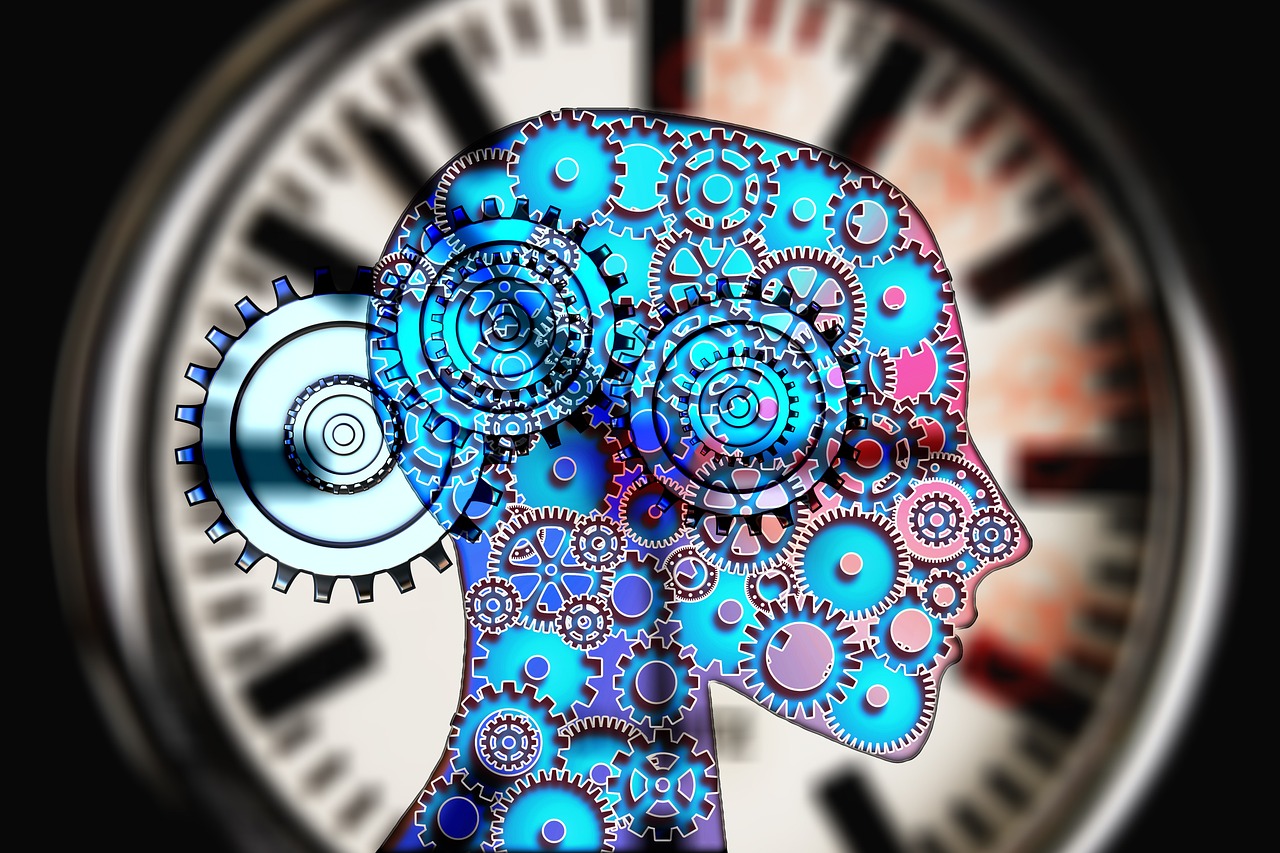
Long-term Memory
Long-term memory is a fascinating aspect of our cognitive architecture, acting as a vast repository where our experiences, knowledge, and skills are stored for extended periods. Unlike short-term memory, which may only hold information for a few seconds, long-term memory can last a lifetime, making it essential for learning and personal identity. Imagine your brain as a library; short-term memory is like the checkout counter where books are temporarily borrowed, while long-term memory is the extensive collection of volumes that shape who you are.
The process of forming long-term memories involves several stages, including encoding, storage, and retrieval. During encoding, information is transformed into a format that can be stored. This can be influenced by various factors, such as the emotional significance of the information or the depth of processing. For example, you’re more likely to remember a moment filled with joy or sadness than a mundane event, highlighting how emotions play a critical role in memory formation.
Once information is encoded, it moves into the storage phase, where it is organized into a network of associations. This organization can be likened to a web, where each strand connects different pieces of information. The more connections you have, the easier it is to retrieve that information later. Retrieval is the final stage, where stored memories are accessed, allowing us to recall past events or learned skills. This process can sometimes be tricky; have you ever struggled to remember a name or a fact, only for it to pop into your head later? That’s your brain at work, navigating its intricate pathways.
Long-term memory can be categorized into two main types: explicit and implicit memory. Explicit memory is conscious and involves facts and events that we can actively recall, such as your first day at school or the capital of a country. Implicit memory, on the other hand, is unconscious and includes skills and tasks that we perform without thinking, like riding a bike or playing an instrument. Both types are vital for our daily functioning and overall cognitive health.
Interestingly, long-term memory is not static; it can change over time. Each time we recall a memory, it becomes malleable, subject to alteration before it is stored again. This phenomenon can lead to the creation of false memories or the embellishment of experiences. Have you ever reminisced about a childhood event and wondered if it happened exactly that way? It's quite possible that your memory has evolved, shaped by your current perceptions and emotions.
In summary, long-term memory is a dynamic and essential component of our cognitive processes. It allows us to learn, grow, and maintain our identities over time. Understanding how it works can help us harness its power, improving our ability to learn and recall information throughout our lives.
- What is the difference between short-term and long-term memory?
Short-term memory holds information temporarily, typically for seconds to minutes, while long-term memory can retain information for years or even a lifetime.
- How can I improve my long-term memory?
Techniques like spaced repetition, mnemonic devices, and regular mental exercises can enhance your long-term memory retention.
- Can long-term memories fade over time?
Yes, long-term memories can weaken or change due to various factors, including lack of retrieval, emotional changes, or new experiences that alter your perceptions.

Perception and Attention
When we think about how we process the world around us, two terms often come to mind: perception and attention. These two cognitive processes work hand-in-hand, allowing us to interpret and respond to our environment. Imagine walking through a bustling market; your senses are bombarded with sights, sounds, and smells. How do you decide what to focus on? That's where attention comes into play, acting as a spotlight that highlights certain stimuli while dimming others.
Perception is the process by which our brain organizes and interprets sensory information. It’s like being a detective, piecing together clues from our surroundings to form a coherent picture. For example, when you see a friend waving at you from across the street, your brain quickly processes their face, body language, and the context of the situation to recognize them. This ability to interpret sensory input is crucial for navigating our daily lives.
On the other hand, attention is the mechanism that allows us to concentrate on specific aspects of our environment while ignoring distractions. Think of it as a filter that helps us prioritize information. There are different types of attention, including selective attention, which allows us to focus on one thing while tuning out others, and divided attention, which enables us to process multiple inputs simultaneously. For instance, when you're at a party, you might engage in a conversation with one person while still being aware of the music playing in the background.
Interestingly, our attention is not just a passive process; it can be influenced by various factors, such as our interests, emotions, and even our past experiences. For example, if you're passionate about photography, you might notice the intricate details of light and shadow in a scene that others might overlook. This personal lens through which we view the world shapes our perceptions and influences our thoughts and decisions.
Moreover, attention can be affected by cognitive load—the amount of mental effort being used in the working memory. When we are overwhelmed with information, our ability to focus diminishes, leading to a phenomenon known as attentional blink. This temporary lapse in attention can cause us to miss important details, much like trying to catch a ball while juggling multiple other objects. Understanding this interplay between perception and attention is essential for improving our cognitive functions and enhancing our learning experiences.
In summary, perception and attention are fundamental components of our cognitive architecture. They allow us to navigate the complexities of our environment, enabling us to make sense of the world and respond effectively. By honing our attention skills and being aware of how our perceptions shape our reality, we can enhance our decision-making abilities and overall cognitive performance.
- What is the difference between perception and attention?
Perception involves interpreting sensory information, while attention is the process of focusing on specific stimuli and filtering out distractions. - How can I improve my attention span?
Techniques such as mindfulness meditation, regular breaks, and minimizing distractions can help enhance your attention span. - Can perception be influenced by emotions?
Yes, emotions can significantly impact how we perceive stimuli, often coloring our interpretations and reactions. - What role does attention play in learning?
Attention is crucial for learning as it helps us focus on relevant information, making it easier to process and retain knowledge.

Emotions and Thinking
Emotions play a pivotal role in shaping our thoughts and decision-making processes. Have you ever noticed how your mood can completely alter your perspective on a situation? For instance, when you're feeling happy, challenges might seem like exciting opportunities rather than daunting obstacles. This fascinating interplay between emotions and cognition is a hot topic in the field of psychology and neuroscience.
To understand this relationship better, we can break it down into several key areas:
- Emotional Influence on Decision-Making: Our emotions can heavily influence the choices we make. When we're excited, we might take risks we wouldn't normally consider. Conversely, fear can lead to avoidance behavior, making us miss out on potential opportunities.
- Cognitive Bias: Emotions can create biases in our thinking. For example, if we feel anxious about a presentation, we might overestimate the likelihood of failure, which can lead to a self-fulfilling prophecy.
- Memory and Emotion: Emotional experiences are often more memorable than neutral ones. Think about it: you probably remember your wedding day or the birth of your child in vivid detail. This is because emotions help encode memories more effectively.
Moreover, the amygdala, a small almond-shaped cluster of nuclei located deep within the temporal lobe, is crucial in processing emotions. It interacts with other brain regions like the prefrontal cortex, which is responsible for rational thinking and decision-making. This interaction highlights how our emotional state can either enhance or impair our cognitive abilities.
Consider this: when you're feeling overwhelmed with stress, do you find it harder to concentrate on tasks? This is not just in your head; numerous studies have shown that high levels of stress can adversely affect your working memory and overall cognitive function. This makes it clear that managing our emotional health is essential for optimal brain performance.
Incorporating emotional intelligence into our lives can significantly enhance our cognitive processes. Emotional intelligence is the ability to recognize, understand, and manage our emotions and those of others. This skill can lead to better decision-making and improved interpersonal relationships, as it allows us to navigate social complexities with greater ease.
In summary, the relationship between emotions and thinking is intricate and profound. By understanding how our emotional states influence our thoughts, we can learn to harness this knowledge to make better decisions, improve our memory, and enhance our overall cognitive functioning.
- How do emotions affect decision-making?
Emotions can significantly sway our decisions, often leading us to make choices based on feelings rather than logic. - What is emotional intelligence?
Emotional intelligence is the ability to identify and manage your own emotions and the emotions of others, which can enhance your cognitive abilities. - Can stress impact memory?
Yes, high levels of stress can impair memory and concentration, making it difficult to think clearly.
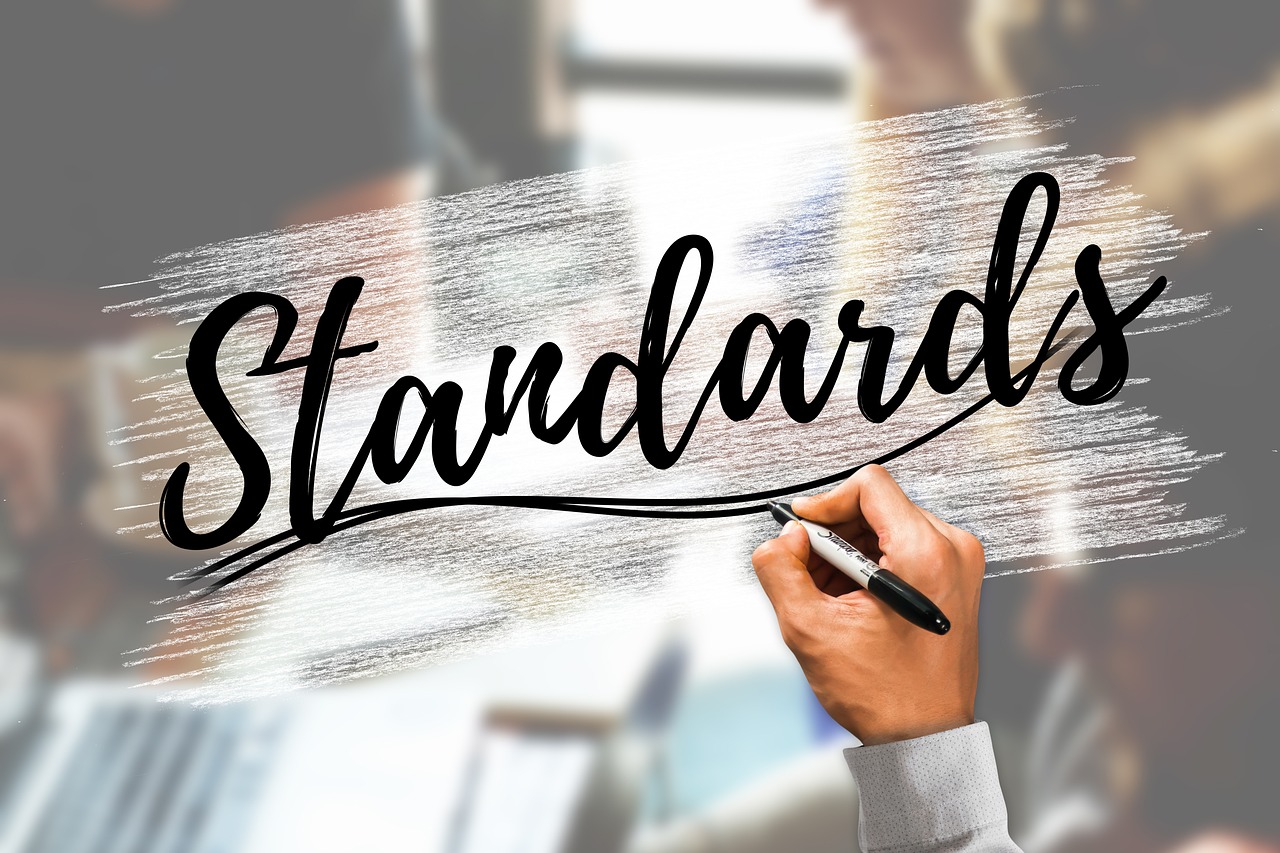
The Impact of Stress
Stress is like a double-edged sword, isn't it? On one hand, it can motivate us to meet deadlines and push through challenges, but on the other, it can wreak havoc on our cognitive functions. When we experience stress, our brain releases a cocktail of hormones, including cortisol and adrenaline, which can significantly impact how we think, remember, and make decisions. Imagine trying to solve a complex puzzle while someone is shouting in your ear; that’s what stress does to our minds. It creates a chaotic environment that makes it difficult to focus and process information effectively.
Research shows that high levels of stress can lead to impaired memory, reduced attention span, and even hinder our decision-making abilities. When we are stressed, our brain prioritizes survival over rational thinking, which can lead to impulsive decisions. This is why you might find yourself making choices you later regret when under pressure. To illustrate this point, let’s consider a few key effects of stress on cognitive functions:
- Memory Impairment: Stress can disrupt the formation of new memories, making it harder to learn and retain information.
- Reduced Attention: Under stress, our ability to concentrate diminishes, leading to mistakes and overlooked details.
- Decision-Making Challenges: Stress can cloud our judgment, making it difficult to weigh options and foresee consequences.
So, how does stress manifest in our daily lives? Think about the last time you had a tight deadline. You might have felt your heart racing, your palms sweating, and your thoughts racing uncontrollably. This is your body’s fight-or-flight response kicking in, preparing you to either confront the challenge or flee from it. However, if this state of heightened alertness becomes chronic, it can lead to long-term cognitive decline. Studies have shown that prolonged exposure to stress can actually shrink the hippocampus, the area of the brain responsible for memory and learning.
The implications of this are profound. If we want to maintain optimal brain function, it’s crucial to find effective ways to manage stress. Techniques such as mindfulness meditation, physical exercise, and proper time management can help mitigate the negative effects of stress. By incorporating these practices into our daily routine, we can create a more balanced mental state, allowing us to think clearly and make better decisions.
In conclusion, while stress is an unavoidable aspect of life, understanding its impact on our cognitive functions can empower us to take control. By recognizing the signs of stress and implementing strategies to manage it, we can enhance our thinking processes and improve our overall mental well-being. Remember, a calm mind is a powerful mind!
- What are some common signs of stress affecting cognitive function?
Common signs include forgetfulness, difficulty concentrating, and making hasty decisions. - Can stress be beneficial?
Yes, short-term stress can enhance performance and motivation, but chronic stress is detrimental. - What are effective stress management techniques?
Techniques include mindfulness, regular exercise, and maintaining a healthy work-life balance.

Emotional Intelligence
Emotional intelligence, often abbreviated as EI or EQ (Emotional Quotient), refers to the ability to recognize, understand, and manage our own emotions while also being aware of the emotions of others. It’s like having a superpower that allows us to navigate the complex world of human interactions more effectively. Imagine walking into a room full of people and being able to sense the mood instantly; that’s emotional intelligence in action. It empowers us to build stronger relationships, make better decisions, and handle stress with grace.
At its core, emotional intelligence comprises several key components:
- Self-awareness: This is the foundation of EI. It involves recognizing our own emotions and how they affect our thoughts and behavior. Think of it as having a mirror that reflects not just our appearance but our emotional state.
- Self-regulation: Once we’re aware of our emotions, the next step is managing them. This doesn’t mean suppressing feelings but rather understanding and controlling them so they don’t control us. It’s like being the captain of a ship, steering through stormy seas without losing your course.
- Motivation: Emotionally intelligent people are often driven by intrinsic motivation. They set personal goals and strive to achieve them, fueled by a passion for what they do rather than external rewards.
- Empathy: This component involves understanding and sharing the feelings of others. It’s not just about feeling sorry for someone; it’s about truly grasping their emotions and perspectives, which enhances interpersonal relationships.
- Social skills: Finally, emotional intelligence manifests in our ability to interact well with others. This includes effective communication, conflict resolution, and the ability to build rapport.
Studies have shown that individuals with high emotional intelligence tend to excel in both personal and professional environments. They are often seen as leaders, not just because of their intelligence or experience, but because they can connect with people on a deeper level. In workplaces, for instance, emotionally intelligent employees can foster a positive environment, enhance teamwork, and drive productivity. They can read the room and adjust their approach accordingly, making them invaluable assets to any organization.
Moreover, emotional intelligence plays a crucial role in mental health. By understanding our emotions, we can better manage stress, anxiety, and depression. It enables us to cope with challenges more effectively, leading to improved overall well-being. For example, someone with high emotional intelligence might recognize when they are feeling overwhelmed and take proactive steps to mitigate those feelings, such as practicing mindfulness or seeking support.
In conclusion, emotional intelligence is a vital skill that can transform our lives in numerous ways. It enhances our ability to connect with others, navigate social complexities, and manage our own emotional landscape. As we develop our emotional intelligence, we not only improve our personal relationships but also pave the way for professional success and mental well-being. So, the next time you find yourself in a challenging situation, remember that understanding emotions—both yours and others’—can be the key to unlocking a world of possibilities.
1. Can emotional intelligence be developed over time?
Yes, emotional intelligence can be developed through practice and self-reflection. Engaging in activities that promote self-awareness and empathy can significantly enhance your emotional intelligence.
2. How does emotional intelligence differ from IQ?
While IQ measures cognitive abilities and intelligence, emotional intelligence focuses on emotional awareness and interpersonal skills. Both are important, but they serve different functions in personal and professional success.
3. Why is emotional intelligence important in the workplace?
Emotional intelligence is crucial in the workplace because it fosters collaboration, improves communication, and enhances leadership abilities. Employees with high EQ can navigate social complexities and contribute to a positive work environment.
4. Can emotional intelligence help with stress management?
Absolutely! By recognizing and understanding your emotions, you can implement strategies to manage stress more effectively. Emotional intelligence equips you with the tools to cope with challenging situations.

Brain Plasticity
, often referred to as neuroplasticity, is an astonishing feature of our brains that allows them to change and adapt throughout our lives. Imagine your brain as a dynamic city, constantly undergoing renovations and expansions based on the experiences you encounter. This adaptability is not just a fascinating concept; it plays a crucial role in how we learn, remember, and recover from injuries. Our brains are not static; they are living entities that respond to our interactions with the world around us.
At its core, brain plasticity involves the formation and reorganization of neural connections. When we learn something new, our brain creates new pathways, akin to building new roads in our city. Conversely, when we stop using certain skills or knowledge, those pathways can weaken or even disappear, much like abandoned streets falling into disrepair. This continuous remodeling is essential for cognitive development, allowing us to adapt to new challenges and environments.
There are two primary types of plasticity: functional plasticity and structural plasticity. Functional plasticity refers to the brain's ability to shift functions from damaged areas to undamaged areas. For example, if one part of the brain is injured, other parts can sometimes take over its functions, showcasing the brain's remarkable resilience. On the other hand, structural plasticity involves the brain's ability to physically change its structure in response to learning and experience. This means that the more we engage in certain activities, the more our brain's structure can change to accommodate those activities.
One of the most compelling aspects of brain plasticity is its implications for recovery from injury. For instance, after a stroke, patients often undergo rehabilitation to regain lost functions. This process capitalizes on the brain's plasticity, encouraging it to form new connections and pathways. Techniques such as cognitive rehabilitation, physical therapy, and even mindfulness practices can enhance neuroplasticity, making it possible for individuals to regain skills and improve their quality of life.
Furthermore, engaging in lifelong learning and challenging our brains with new experiences can promote brain plasticity. Activities such as learning a new language, playing a musical instrument, or even solving puzzles can stimulate the brain and encourage the growth of new neural connections. It's like giving your brain a workout, helping it stay fit and agile as you age.
In summary, brain plasticity is a fundamental aspect of how we function, learn, and recover. It highlights the incredible potential of our brains to adapt and thrive, reminding us that it's never too late to learn something new or recover from setbacks. So, whether you're picking up a new hobby or working through a challenging situation, remember that your brain is capable of remarkable transformations.
- What is brain plasticity?
Brain plasticity is the brain's ability to change and adapt in response to experiences, learning, and injury.
- Can brain plasticity help with recovery from brain injuries?
Yes, brain plasticity allows other parts of the brain to take over functions lost due to injury, aiding in recovery.
- How can I promote brain plasticity?
Engaging in new learning experiences, practicing mindfulness, and participating in cognitive challenges can enhance brain plasticity.
- Is it possible to improve memory through brain plasticity?
Absolutely! By consistently challenging your brain, you can strengthen memory pathways and improve cognitive function.
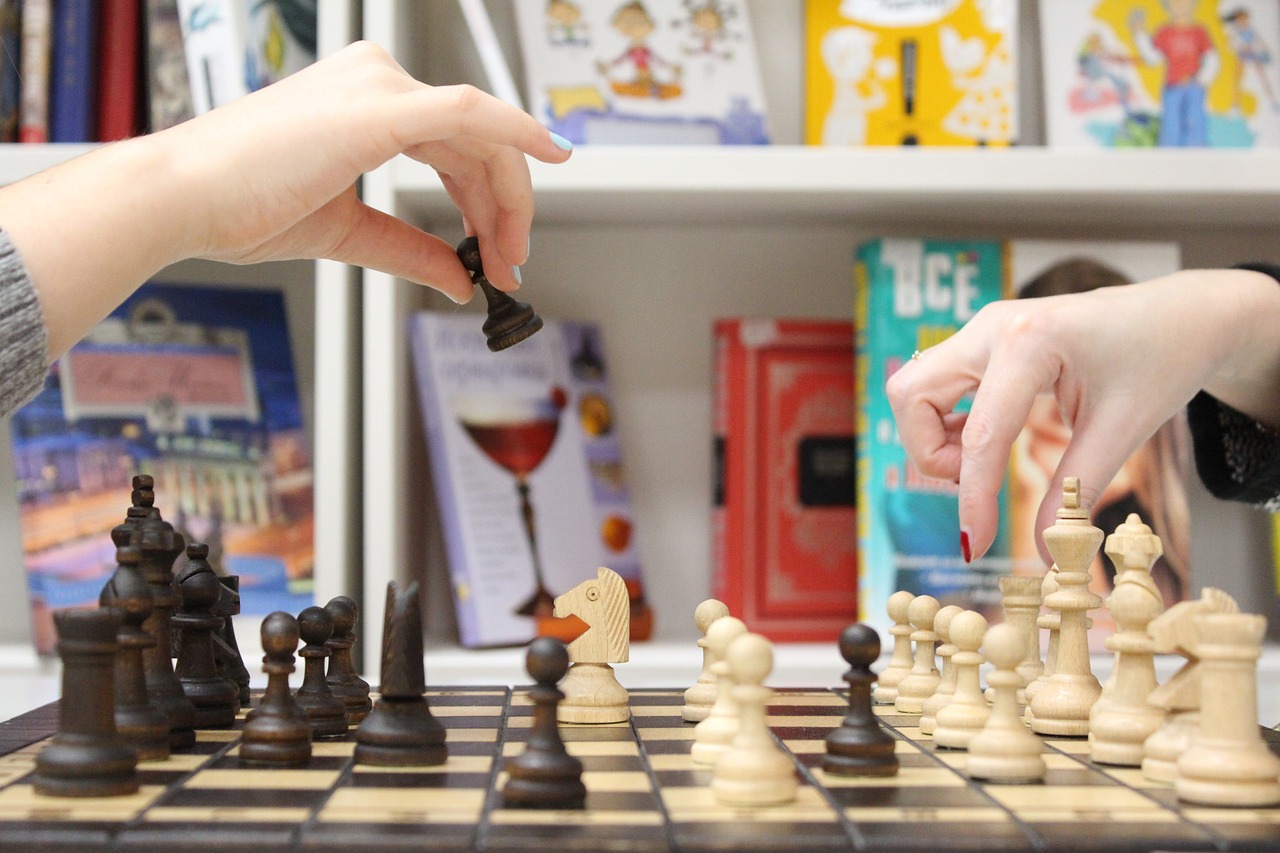
Learning and Adaptation
Learning is not just a process; it's a remarkable journey that showcases the brain's incredible plasticity. This term refers to the brain's ability to change and reorganize itself by forming new connections throughout life. Imagine your brain as a vast city with countless roads and pathways. Each time you learn something new, you're constructing a new road or even a bridge that connects different parts of this city. This continuous development is vital not only for acquiring new skills but also for adapting to the ever-changing world around us.
At its core, learning involves several stages that engage different cognitive processes. Initially, we encounter new information, which our brain must recognize and process. This is where attention plays a crucial role. Think of it as a spotlight that illuminates what is important, allowing us to focus on the task at hand. Once we pay attention, our brain begins to encode this information, transforming it into a format that can be stored in memory. This is akin to downloading a file onto your computer; the information is now saved for future use.
Once information is encoded, it enters the realm of storage. The brain categorizes this new knowledge, filing it away in an organized manner. Some information is stored in short-term memory, where it can be accessed quickly but is easily forgotten. Other pieces of information transition into long-term memory, where they can remain for years, even a lifetime. This transition is crucial because it allows us to build a repository of knowledge that we can draw upon in various contexts, like a library filled with books waiting to be read.
As we continue to learn, we engage in a process called reinforcement. This can occur through practice, repetition, or even through emotional experiences that make learning more profound. For instance, when you learn to ride a bicycle, the initial wobbles and falls may feel frustrating. However, as you practice, your brain strengthens the neural pathways associated with balance and coordination. Before you know it, riding a bike becomes second nature, showcasing how practice leads to mastery.
Adaptation is another critical aspect of this learning process. Life is full of challenges and changes, and our ability to adapt is what keeps us resilient. When we face new experiences—be it a job change, a move to a new city, or even a shift in personal relationships—our brain actively reorganizes itself to accommodate these changes. This adaptability is not just about surviving; it's about thriving in new environments. For example, when learning a new language, your brain must adapt by creating new neural connections that allow you to understand and communicate effectively. This is why immersion in a language-rich environment can accelerate the learning process, as your brain is constantly adapting to new sounds, structures, and meanings.
In summary, the processes of learning and adaptation are intertwined, forming a dynamic duo that propels us forward in life. They demonstrate the brain's remarkable ability to not only store information but also to reshape itself in response to our experiences. As we continue to learn, we not only enhance our knowledge but also foster resilience and adaptability, essential qualities for navigating the complexities of life.
- What is brain plasticity? Brain plasticity refers to the brain's ability to change and adapt in response to new experiences, learning, and injury.
- How does learning occur in the brain? Learning occurs through a series of processes including attention, encoding, storage, and reinforcement, which form new neural connections.
- Can the brain adapt to injuries? Yes, the brain can adapt to injuries through rehabilitation and therapy, which help to restore cognitive functions.
- What are some effective ways to enhance learning? Techniques such as spaced repetition, active engagement, and immersive experiences can significantly enhance the learning process.

Recovery from Injury
When we talk about brain recovery, we dive into an incredible journey of resilience and adaptation. The brain is not just a static organ; it's a dynamic powerhouse capable of remarkable recovery after injury. Think of it like a city that has faced a natural disaster. Initially, there may be chaos and destruction, but with time, effort, and the right strategies, it can rebuild stronger than before. This analogy aptly describes the brain's ability to heal and rewire itself following trauma.
After an injury, whether it's due to an accident, stroke, or other neurological conditions, the brain undergoes a process known as neuroplasticity. This is where the magic happens—new neural pathways are formed, and existing connections are strengthened. Rehabilitation techniques play a critical role in this process, as they help guide the brain's recovery efforts. Some of the most effective methods include:
- Physical Therapy: Engaging in targeted exercises can enhance motor skills and coordination.
- Occupational Therapy: This focuses on improving daily living skills, allowing individuals to regain independence.
- Cognitive Rehabilitation: Specific tasks designed to improve memory, attention, and problem-solving skills.
- Speech Therapy: Essential for those who have experienced communication difficulties post-injury.
Research has shown that early intervention is crucial for optimal recovery. The sooner rehabilitation begins after an injury, the better the outcomes tend to be. For instance, a study published in the Journal of Neurotrauma indicated that patients who started therapy within the first few weeks post-injury had significantly improved cognitive function compared to those who waited longer.
Moreover, technology has become a game-changer in the field of rehabilitation. Virtual reality (VR) and robotics are now being utilized to create immersive environments that aid in recovery. Imagine being able to practice walking or performing tasks in a safe, controlled virtual world before stepping back into reality. This not only boosts confidence but also accelerates the rehabilitation process.
However, it's essential to remember that recovery is not a linear path. Each individual's journey is unique, influenced by factors such as the type of injury, age, and overall health. Therefore, a personalized rehabilitation plan is vital. This plan should be flexible, adapting to the individual's progress and challenges along the way.
In summary, the brain's ability to recover from injury is a testament to its remarkable plasticity. With the right support, rehabilitation techniques, and a bit of patience, individuals can often regain lost functions and improve their quality of life. As we continue to explore and understand the complexities of brain recovery, we can unlock new possibilities for healing and growth.
- What is neuroplasticity?
Neuroplasticity is the brain's ability to reorganize itself by forming new neural connections throughout life. It plays a vital role in recovery from brain injuries. - How long does recovery from a brain injury take?
The recovery time varies widely depending on the severity of the injury and the individual's circumstances. Some may see improvement within weeks, while others might take months or even years. - Can cognitive rehabilitation help with memory loss?
Yes, cognitive rehabilitation can be effective in improving memory and other cognitive functions through targeted exercises and strategies. - Are there any new technologies being used in brain injury recovery?
Yes, technologies like virtual reality and robotic assistance are being increasingly used to enhance rehabilitation outcomes.
Frequently Asked Questions
- What is the basic structure of the brain?
The brain is a complex organ made up of various parts, including the cerebrum, cerebellum, and brainstem. Each part has distinct functions, from processing sensory information to regulating vital bodily functions. Neurons, the brain's building blocks, communicate through synapses using neurotransmitters, which are essential for thought and behavior.
- How do cognitive processes like memory and perception work together?
Cognitive processes are interconnected; memory helps us retain information, while perception allows us to interpret sensory inputs. For instance, when you see a familiar face, your perception recognizes it, and your memory retrieves personal experiences related to that person. This interaction shapes how we think and respond in various situations.
- What is the difference between short-term and long-term memory?
Short-term memory holds information temporarily, usually for seconds to minutes, while long-term memory stores information for extended periods, sometimes for a lifetime. Short-term memory is like a chalkboard that can be wiped clean, whereas long-term memory is akin to a library filled with books that can be accessed anytime.
- How does stress affect cognitive functions?
Stress can significantly impair cognitive functions such as memory, attention, and decision-making. When stressed, the body releases hormones that can disrupt the brain's ability to process information. It's like trying to think clearly while being bombarded by loud noises; it becomes difficult to focus and recall information.
- What is emotional intelligence, and why is it important?
Emotional intelligence is the ability to recognize, understand, and manage our emotions and those of others. It's crucial because it enhances cognitive processes, improves decision-making, and fosters better relationships. Think of it as having a compass that guides you through the emotional landscape of your interactions.
- What does brain plasticity mean?
Brain plasticity refers to the brain's remarkable ability to adapt and change throughout life. This means that our experiences can physically alter the neural connections in our brains. It's similar to how a tree grows new branches in response to sunlight; the brain reshapes itself based on our activities and experiences.
- How does learning contribute to brain plasticity?
Learning is a key driver of brain plasticity. When we learn something new, our brains create new neural connections or strengthen existing ones. This adaptability is vital for cognitive development, akin to a muscle that grows stronger with regular exercise; the more we engage our brains, the more robust they become.
- Can the brain recover from injuries?
Yes, the brain has an incredible ability to recover from injuries, thanks to its plasticity. Rehabilitation techniques, such as physical therapy and cognitive exercises, can help restore cognitive functions after trauma. It's like a road being repaired after a storm; with time and care, the path can be made smooth again.

